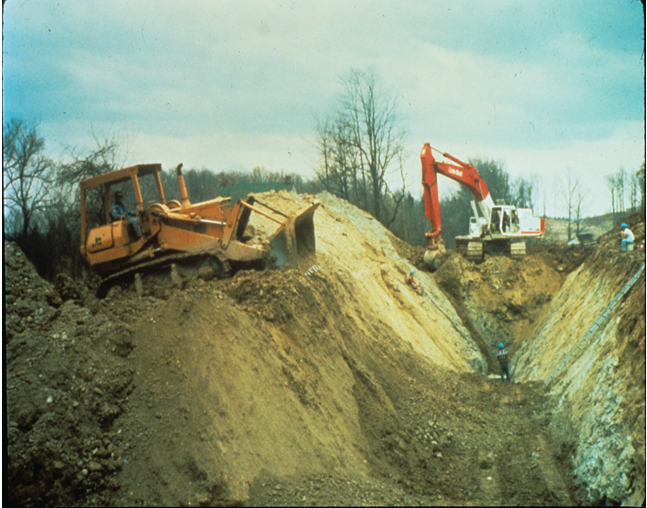Spot The Safety Violation: Dig These Trench Hazards
This trench has a number of safety hazards’how many can you identify’

Trenches and excavations are very common in many workplaces, especially construction sites. They’re also very hazardous. This picture from elcosh illustrates several of those hazards.
Cave-ins & Collapses
For example, cave-ins or collapses are a serious hazard in trenches and excavations. When you remove soil to make an opening in the ground, the surrounding soil ‘relaxes’ and increases the pressure on the walls around the opening, making them unstable.
In this picture, the walls of this very deep trench don’t appear to have any shoring or support at all. So if the walls should partly or completely collapse, the worker at the bottom of the trench is likely to be buried alive. And unfortunately, such tragedies are all too common.
Example: A worker in New Brunswick was laying pipe in the bottom of a trench. Despite the fact that there had already been three cave-ins that day, the work continued. In the fourth cave-in, the worker was buried up to his shoulders. Bystanders tried to get him out. But a fifth cave-in buried him completely.
Rescuers eventually pulled the worker out from underneath about two feet of dirt. He was pronounced dead at the hospital from severe crushing injuries to his chest that happened in the fourth cave-in.
To prevent collapses and cave-ins, the OHS laws generally require certain trenches and excavations to have ‘shoring”that is, supports placed within the excavation to hold up or support the walls. Whether shoring is required typically depends on:
- Depth of the excavation;
- Type of soil;
- Sloping of the excavation’s walls; and
- Work conditions surrounding the excavation, such as the presence of vibrations.
These factors will also determine the type of shoring required and other requirements, such as the spacing of support beams.
Powered Mobile Equipment
Powered mobile equipment such as back hoes, dozers and the like can strike workers in and around excavations or collapse on top of workers inside them. For example, the two pieces of powered mobile equipment in this picture are right at the unprotected edge of the trench and could easily fall into it, endangering both the worker in the trench and those operating the equipment.
As a result, the OHS laws generally require companies to erect barriers near the access points for powered mobile equipment that are high enough to keep such equipment from sliding or rolling into the excavation.
In addition, when heavy equipment is used next to an excavation or trench, the shoring or bracing for the walls must be adequate to support the added pressure and weight of the equipment.
Falling Workers
Although workers inside trenches and excavations are most at risk, other workers can also get hurt if they should fall into an unprotected trench. For instance, one worker on the far right of the photo is casually sitting at the very edge of the top of the trench and could easily tumble into it. (Another worker on the left of the trench is unsafely laying on its side.)
To protect workers who are outside of the trench or excavation, most OHS laws require excavations to be covered or protected with a barrier, fence or guardrail to prevent workers, visitors and others on the surface from getting too close to the edge.
Entry & Exit
Workers must be able to safely enter and exit a trench or excavation. The entry and exit areas should be near workers and safely shored and supported.
The trench in the picture has a ladder laying along the right side wall. But it doesn’t look like the ladder is being held in place or supported in any way. As a result, it could move or fall as a worker tries to climb up or down it.
Additional Information & Resources
The OHS Insider has more information on the hazards and OHS requirements specific to trenches and excavations.